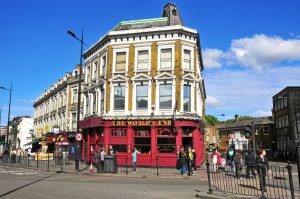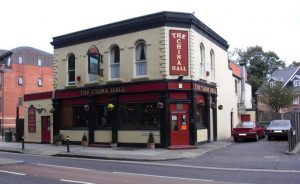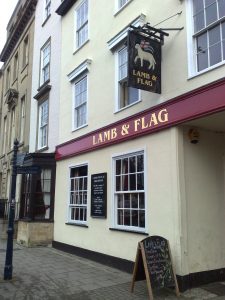Intrinsic to London’s culture and vital for the economy. London Pubs threatened with extinction
1,220 London pubs have been lost in the last 15 years, meaning a decline of a quarter since 2001. The figures, discovered by inter-departmental business register (IDBR) and Campaign for Real Ale (CAMRA) and recently compiled by GLA Economics, are highly alarming, because of their great cultural importance to the city and their deep connection with English culture.
The shocking figures are highlighted by an interactive map showing the net loss of public houses per London borough. In 2001, there were 4,835 pubs in London. By 2016, this had fallen by 25% to 3,615. Per year, London had to face an average loss of 81 pubs.
Two London boroughs are in the most critical situation, reporting a loss of more than half of their pubs – Barking and Dagenham (a loss of 56%) and Newham (52%).

Other badly-affected boroughs include Croydon (45%), Waltham Forest (44%), Hounslow (42%) and Lewisham (41%). Hackney, the only borough that did not report an overall loss – saw an increase of 3 per cent since 2001.
According to a recent survey, 54% of international visitors to London went to a pub during their stay in the capital.
What are the causes
This incredible decline of the number of pubs in London suggests they are coming under increasing danger over a series of issues, including rises in business rates, conflicts with residents and developers and the relaxation of permitted development rights in 2015 – which allows certain types of development to go ahead without planning approval.
“Pubs play a vital part in many people’s lives, providing a place to meet and socialise and feel part of a community. Yet London pubs are under enormous threats, notably from increasing business rates, high alcohol duties and property speculation. CAMRA has welcomed the opportunity to work with the Mayor in monitoring pub closures in the capital, and hopes this initiative will continue to draw attention to the plight of London pubs.” said Greater London CAMRA Regional Director, Geoff Strawbridge.
The Mayor Sadiq Khan is pledging to help halt the decline in the number of pubs in London. Actually, this audit of London’s public houses is the first strand of the Mayor’s Cultural Infrastructure Plan for 2030 – which sets out to identify what is needed in order to sustain London’s future as a cultural capital.

The Cultural Infrastructure Plan will take into account a wide range of cultural assets, from dance studios to theatres and artist studios to nightclubs, with a view to embedding culture into the forthcoming London Plan, the Mayor’s development strategy for the capital, ensuring that culture is planned in a similar way to other vital services, such as housing and transport.
Sadiq has committed to working together with the Campaign for Real Ale (CAMRA) to undertake an annual audit, so that the number of pubs in the capital can be tracked more closely, and efforts can be made to stanch the flow of closures in the city.
London’s Night Czar, Amy Lamé launched this month a public consultation on ‘Culture and the night time economy’5, which contains guidance on how boroughs across the city can use the current London Plan to protect public houses from closure.
This encourages boroughs to implement the Agent of Change principle – putting the onus on developers that build properties next to pubs to pay for soundproofing, ensuring residents and revellers can co-exist peacefully. Consultation ends onTuesday, 31 May.
Part of English heritage and vital for jobs
The Mayor admits that the Great British drinking house has been a longstanding part of English heritage, underlying the important contribution they make to the capital’s culture.
The influence of pub culture can be seen in everyday London life, starting with the five tube stations and the multitude of areas around the city named after pubs, and ending with the historic tales of iconic English authors and characters who have frequented and been inspired by the many boozes across the capital.
“The Great British Pub is at the heart of the capital’s culture. From traditional workingmen’s clubs to cutting-edge micro-breweries, London’s locals are as diverse and eclectic as the people who frequent them”, said Mayor of London, Sadiq Khan.
“Every pub closed in London is a blow to a local community, and these statistics show that London’s locals are under real threat from a wide range of issues – from development to rising business rates. We all need to love our pubs, and not take them for granted.” said Amy Lamé, Night Czar.

“As an American who came to live in London over 20 years ago, I immediately fell in love with London’s pub culture. Running a pub of my own, I understand just how important they are to the life and spirit of a community. If you’re worried about your local watering hole, then please get in touch with CAMRA. We’re working closely alongside them to help safeguard the future of the capital’s pubs.” she added.
The pubs are intrinsic to London’s culture, but also a vital economic driver, providing the first jobs in their life for many young people, generating one in six of all news jobs among 18-24 year olds.
Although the number of pubs in the capital has dramatically fallen, employment in pubs has grown by 3,700 to reach 46,300 in 2016, an increase of 8.7 per cent.
Khan also said that he is shocked at the rate of closure highlighted by the statistics above, and that the City Hall has partnered with CAMRA to ensure they can track the number of pubs open in the capital and redouble theefforts to stem the rate of closures.
“From the outset of my Mayoralty, I’ve made safeguarding and growing the night-time economy a key priority and this simply isn’t possible without a thriving pub scene. Together with my Night Czar, Amy Lamé, we will do all we can to protect pubs across London.” Khan pointed out.
A pub with a history of 300 years faces hazard
The Mayor shone a spotlight on The China Hall in Rotherhithe, a pub boasting a history of nearly 300 years, to highlight the threat that pubs across the capital are facing.
The landlords, Michael and Linda Norris have run the pub for 34 years, and their family have links to the area going back generations. In 2013, the pub was sold to developers, who recently offered them a new 10-year lease for double what they currently pay. If Michael and Linda are unable to meet this extra cost, they face losing both their home and livelihood, and the community will lose a much-loved pub.

“The future of The China Hall hangs in the balance after the site was sold to a developer a few years ago. We’ve both lived in Rotherhithe all our lives. Our family and friends are all here, and we have links to the area going back generations.” Michael and Linda Norris, landlords of The China Hall, Rotherhithe said.
“We’ve had punters who’ve been drinking here for decades and we’re at the centre of community life. If the lease of the pub isn’t renewed we would likely have to leave the area due to rising rents. It’s great that the Mayor is recognising the cultural importance of pubs for local communities, and the measures he has proposed make it harder for situations like ours to occur in the future.” they added.
Sadiq recently highlighted the issues being faced by grassroots music venues and cinemas as a result of rising business rates5, calling on the Valuation Office Agency to review its valuation policy, as the way business rates are calculated puts grassroots music venues at high risk as they need large buildings in town and city centre locations – where property prices have particularly soared.
London Pub facts
- Five tube stations are named after pubs (Swiss Cottage, Royal Oak, Manor House, Angel and Elephant & Castle)
- Maida Vale is named after a pub (the Heroes of Maida)
- Other areas named after pubs include Fitzrovia (Fitzroy Tavern), Nag’s Head in Holloway, Baker’s Arms in Waltham Forest, New Cross in Lewisham, White Hart Lane in Tottenham
- According to tradition, Pimlico is named after Ben Pimlico, a publican “famous for his nut brown ale” according to Gifford, in his edition of Ben Jonson
Historical and heritage of London’s pubs
- Ye Olde Watling is reputed to have been built by Sir Christopher Wren in 1666 for workers on his St Paul’s Cathedral and constructed with wood from old ships timbers. He used one of upper rooms as his drawing office during the building of St Paul’s
- Samuel Pepys watched The Great Fire of London from The Anchor pub on Bankside. Samuel Johnson used to drink at The Anchor regularly, as well as Ye Olde Cheshire Cheese on Fleet Street (which Mark Twain and Dickens also frequented)
- Dick Turpin used to drink at The Spaniards in Hampstead and at The Flask in Highgate, as did the Romantic Poets Byron, Shelley and Keats. The Spaniards also features in Bram Stoker’s Dracula. Turpin’s pistols were said to hang over the bar

- Gladstone frequented The Trafalgar Tavern in Greenwich, while Charles II used to take his mistress Nell Gwynn for dinner at The Dove in Hammersmith
- The Mayflower in Rotherhithe was the stopping point for the pilgrim fathers as they emigrated to America. The Mayflower (the boat) docked outside the pub, then called The Shippe, before it went via Plymouth to America
- The Old Bank of England still has the original vaults belonging to the Bank of England hidden in its cellar which held gold bullion and also the Crown Jewels during the First World War
- During the Second World War, The French House and De Hems in Soho were meeting places for the French Resistance, including Charles de Gaulle
- Marx and Engels wrote the Communist Manifesto in the Red Lion pub in Soho. Lenin used to drink at The Crown Tavern
- The upstairs room of The Star Tavern in Belgravia is where the Great Train Robbers hatched their plan. Other patrons included Peter O’Toole and Diana Dors
Cultural heritage of London’s pubs
- Dickens was a frequenter of many pubs in London including the Lamb and Flag on Conduit Street (which Dryden also frequented), The George and Vulture (mentioned in The Pickwick Papers), the One Tun (which inspired Bill Sykes’ pub in Oliver Twist); and The Grapes, which is now owned by Sir Ian McKellen
- Turner sketched views of the Thames from the Prospect of Whitby in Wapping

- Orwell drank in The Dog and Duck in Soho, as did John Constable and Dante Gabriel Rossetti. The Newman House in Soho was the inspiration for the underclass pub in Orwell’s 1984
- Dylan Thomas used to drink at The Fitzroy Tavern in Bloomsbury when he worked at the BBC (as did Orwell). TS Eliot and the 1930s literary set drank in the nearby Marquis of Granby on Rathbone Street, Soho
- The Black Friar, by Blackfriars Bridge, was saved from demolition following a campaign led by the poet Sir John Betjeman